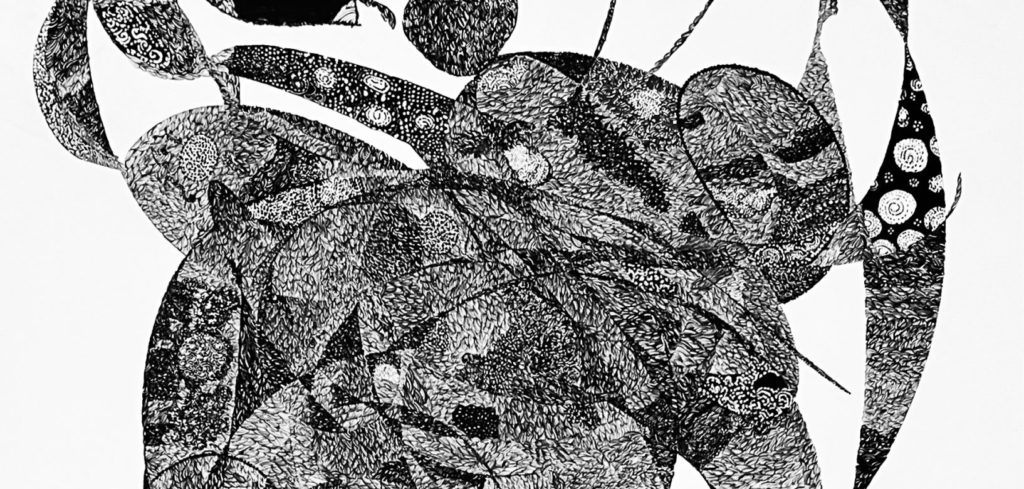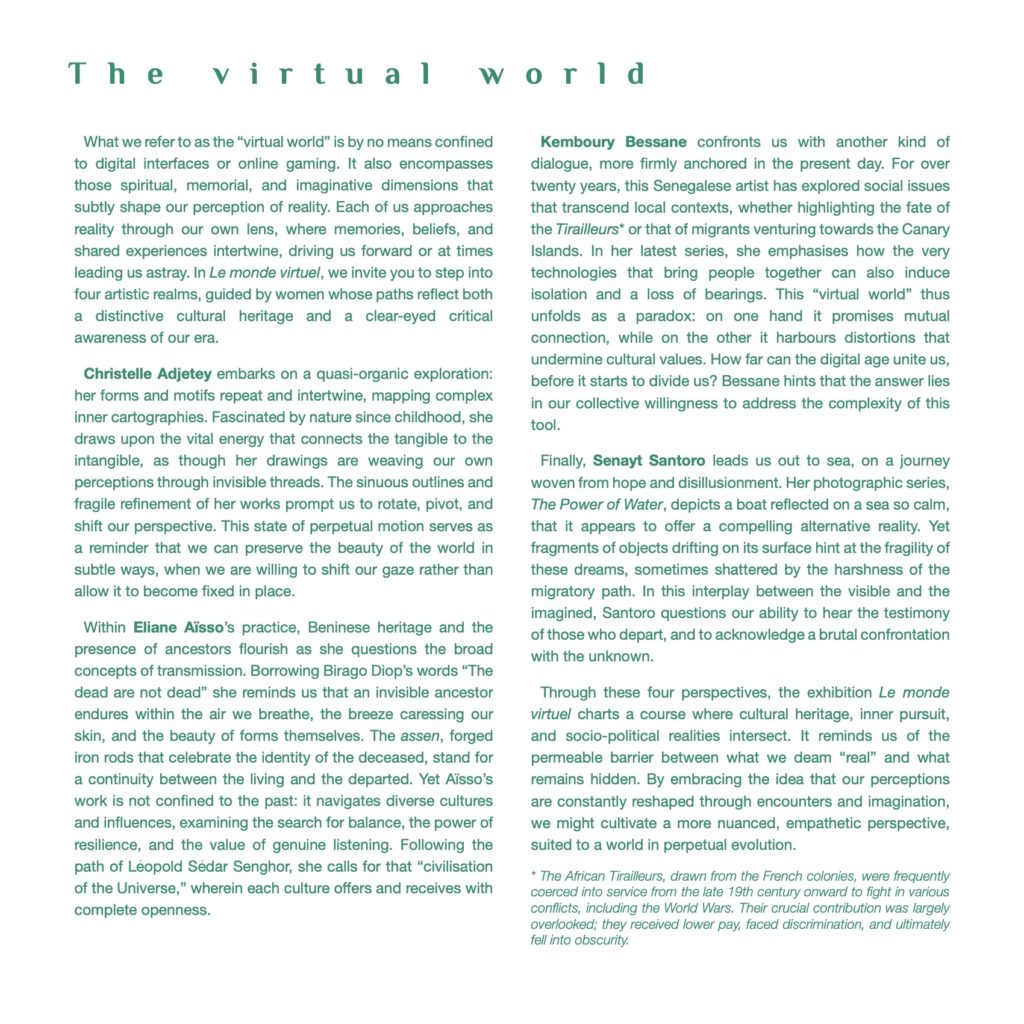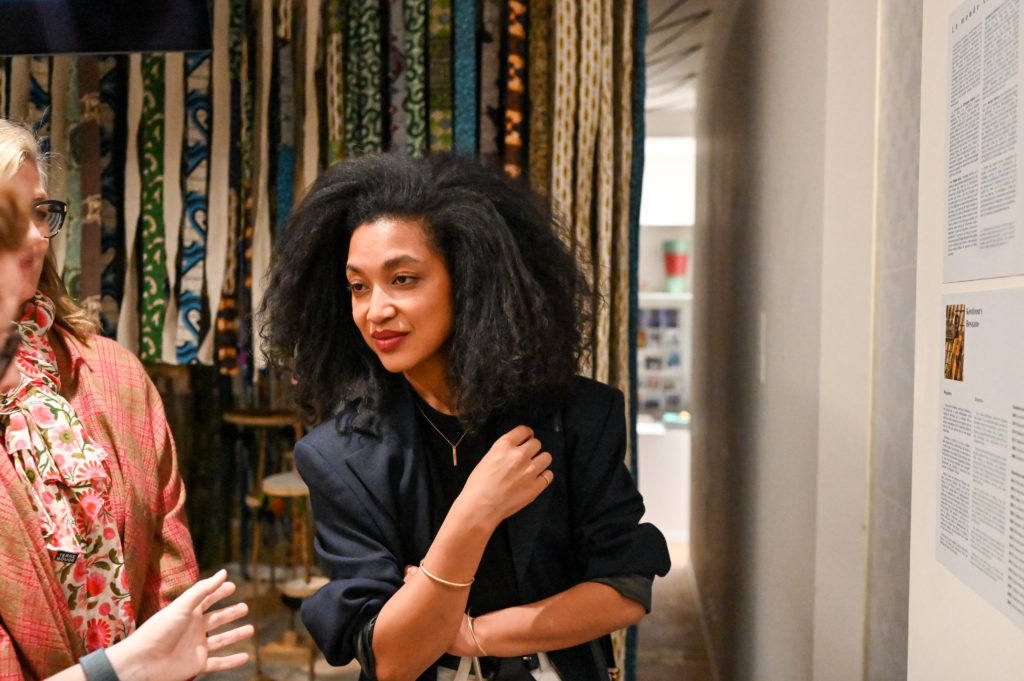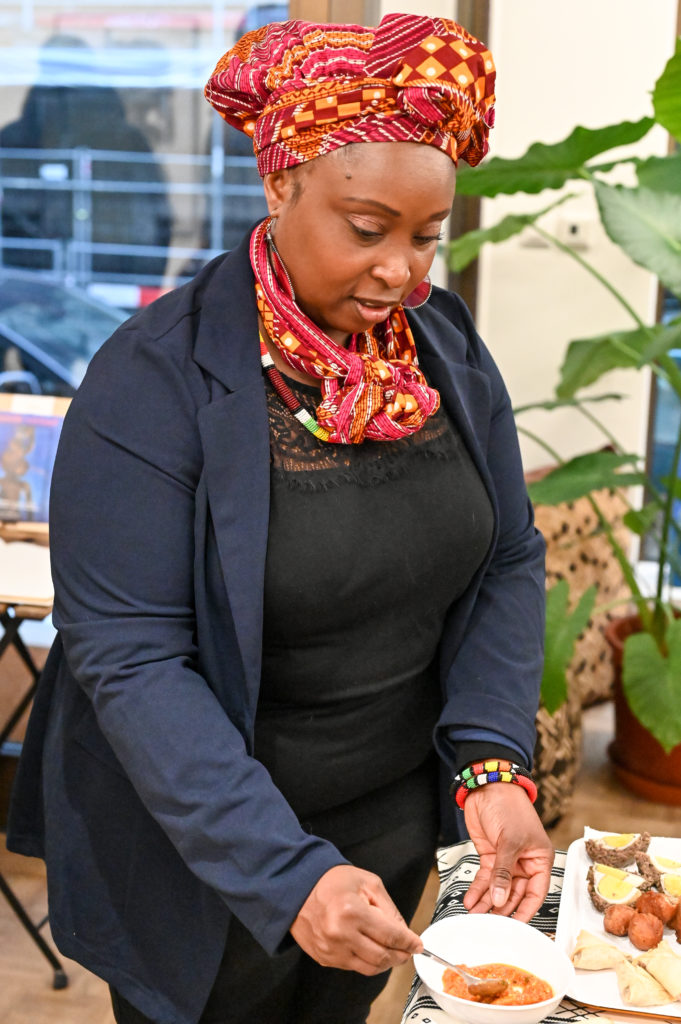What we call the “virtual world” is not confined to the digital realm or gaming environments: it also embraces those spiritual, memorial, and imaginary spaces that subtly shape our relationship with reality. Through four artists from diverse backgrounds, this exhibition invites us on a journey where cultural heritage, inner exploration, and contemporary challenges converge.

Senayt Santoro, Drifting Treasures #8 (2024)
Christelle Adjetey creates “inner cartographies” woven from interlacing motifs, investigating the link between the tangible and the intangible. Eliane Aïsso, inspired by Beninese heritage and the words of Birago Diop—“The dead are not dead”—examines the continuity between the living and the departed, while calling for a “civilisation of the Universe” grounded in openness. Eliane Aïsso, inspired by Beninese heritage and the words of Birago Diop—“The dead are not dead”—examines the continuity between the living and the departed, while calling for a “civilisation of the Universe” grounded in openness. Finally, Senayt Santoro takes us to sea with her series The Power of Water, where the hope of a distant horizon meets the harsh realities of migration.

Christelle Adjetey, Inner World (detail) (2024)
By highlighting the porous boundary between the real and the invisible, Le monde virtuel reminds us that our ever-shifting perceptions can reveal the complexity of an endlessly evolving world.
Curatorial text (click here to download the exhibition catalogue):

Exhibition launch
Photos by Clara Watt
















In her installation Présence de l’Absent, Aïsso explores the representation of women within ancestral Beninese traditions by reimagining asen, portable altars that serve as a bridge between the living and the dead. The installation creates a space for reflection and reverence, inspired by ancestor worship in the Vodoun tradition. Traditionally forged in metal, the asen here are crafted from organic materials: by replacing metal with wood and textiles, the artist asserts the role of women in cultural memory and transmission.Through this work, Aïsso reconsiders both the historical meaning and materiality of the asen, subverting a sacred object historically associated with male-dominated codes to place women, as bearers of life, at the center of her Beninese cultural heritage.



